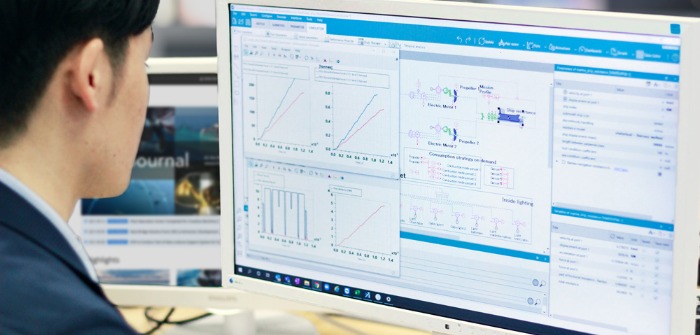NYK, Monohakobi Technology Institute (MTI), the American Bureau of Shipping (ABS) and Winterthur Gas & Diesel (WinGD) have announced the start of a joint research project to optimize ship design by utilizing a battery-hybrid system to aid vessel propulsion while also reducing greenhouse gas emissions.
When sailing in strong waves or winds, the revolutions of a vessel’s main engine might increase significantly to enable the ship to maintain speed – this is known as load fluctuation. The vessel’s shaft generator may also increase the load on the main engine because it is connected to the ship’s propellor shaft. This is used to generate electricity on board the ship as the main engine rotates.
The battery-hybrid system has been designed to reduce the load placed on the main engine by the shaft generator. It supplies electricity from batteries when load on the vessel’s main engine changes. Thus, power for propulsion can be increased and main engine operation becomes more efficient. Furthermore, the system enables a significant reduction in greenhouse gas emissions because a generator is no longer required to supply electricity to onboard equipment.
During the joint research project, the companies aim to create an integrated simulation model of ships. This will be done by combining the modeling technologies of each individual partner to ensure that greenhouse gas reduction is maximized when utilizing the battery-hybrid system.
NYK and MTI will combine modeling technologies for actual sea performance to create an integrated model of an entire ship. WinGD’s modeling technology will be used for the engine plants and batteries, and ABS will apply its knowledge to evaluate the effect on greenhouse gas reduction.
Subsequently, a ship will be designed in a digital space and will then undergo navigation simulation using a scenario that assumes meteorological conditions in actual seas. The findings will be used to optimize ship design. The ship model will be verified in accordance with a modeling and simulation framework to be developed by ABS.
In the future, NYK, MTI, ABS, WinGD and shipyards will collate the project’s simulation results with the performance data of real ships carrying out operations at sea to improve simulation accuracy.
NYK and MTI aim to utilize the simulation technology to assist the NYK Group’s shipbuilding plans and optimize the method of operation and control of the battery-hybrid system.



